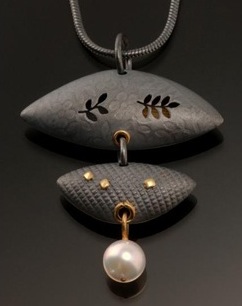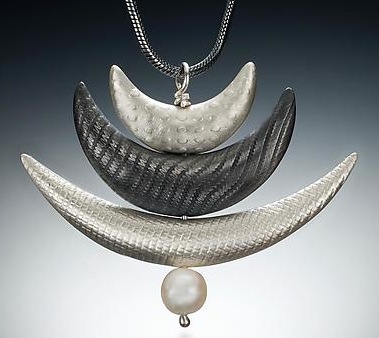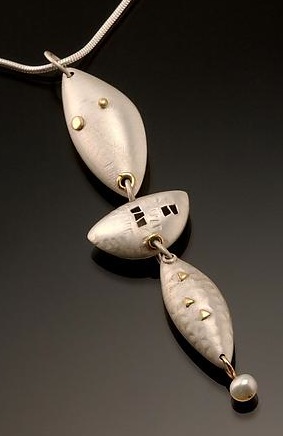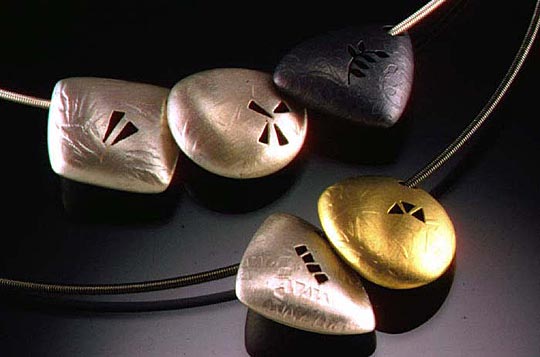
Barbara Bayne’s jewelry is often dark and organic, like something dug from the earth. Perhaps this has something to do with her years of living and designing in the Berkshire Mountains of western Massachusetts, where she got her inspiration on daily strolls through the woods with her yellow Lab.
Bayne relocated to Havre de Grace, Maryland, not long ago, and the brighter look of satin-finished sterling and gold has reappeared in her jewelry, But it still has the distinct flavor of pods picked up along a woodland trail.
Bayne has been practicing die forming since she was an art student two decades ago. She worked for a jeweler who specialized in die forming, then did her undergraduate thesis on the technique.
“I’ve tried other fabrication methods over the years, but I always come back to die forming,” says Bayne. “It’s the easiest thing to sell, to tell you the truth.”
Her forms have become more organic over the years, and she has picked up a couple Niche awards for her necklaces of stacked and textured sterling forms that resemble the stones you find washed up on a riverbank.

Bayne often cuts her forms in half in order to piece them together in different ways. “They’re hollow and very light,” she says, “and they feel smooth, like you want to pick them up and put them in your pocket.”

If you look closely, her forms have textured patterns, are often pierced and sometimes embellished with pearls and bits of gold. To achieve the patterned surfaces, Bayne textures the metal sheet first, using a hammer or roller printing, before placing rubber over it and compressing it in a hydraulic press. The rubber pushes the silver in to create what she calls “a puff.” In some cases, she creates double-sided beads by soldering two half puffs that look the same on both sides.
“Working with die-formed pieces is like doing small-scale sculpture,” Bayne says. “Somehow I’m better able to design with these rounded forms. I’ve tried more conventional methods of making jewelry but it never feels like a good design to me. I end up changing it back, making new shapes and moving forward with the die forming instead.”
Die-forming tip for jewelry makers: “When you cut a piece from a metal sheet to be die formed, always cut it a quarter inch larger than the hole in the die.”
You can find more of Barbara’s jewelry on Artful Home and, in July, at the Ann Arbor Street Art Fair. Contact her directly at baynemetal[at]hotmail.com.

